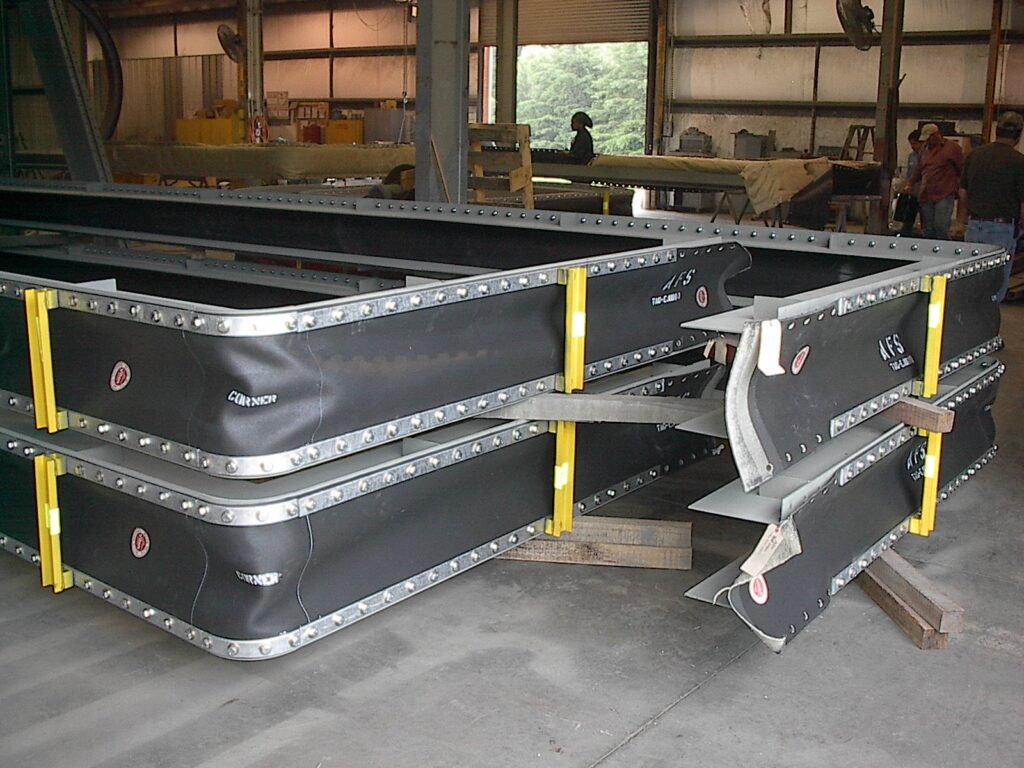Know The Differences Between Metal And Rubber Expansion Joints And The Benefits
If you want to know the many differences between using metal and non-metallic expansion joints and their benefits, you are in the right place. Until the early 20th century, people used only cylindrical joints to join pipes and others. But the extreme weather changes cause contraction and expansion of concrete structures and piping systems. Expansion joints reduce these changes to ensure the stability and safety of the structures and systems. It may be for buildings, bridges, railway tracks, roadways, piping systems in the petrochemical, and power generation, among others.
Expansion joints occupy only half the space of the cylindrical joints and one-third of their weight to provide high efficiency and low deformation under pressure. Also, it reduces sediment build-up, turbulence, and thrust effects on the structures and systems. Over time, they evolved to use rubber, plastic and fibre instead of metals. But rubber and later plastics for making flexible rubber expansion joints have unique benefits. So, choose the right rubber expansion joints or other ducting non-metallic expansion joints per your need and budget. Hence check out the differences between metal and rubber expansion joints for pipes and their many benefits.
What are rubber expansion joints?

Before jumping into the differences, you must know about rubber expansion joints. Also known as elastomer expansion joints, they help piping run movements and ensure efficient systems. These flexible rubber expansion joints replacing metals with rubber joints provides many advantages. A few noteworthy among them include reducing noise, relieving movement stresses, isolating vibration, and compensating for misalignment. Also, fabrication from fabric & synthetic elastomers and reinforced with metal offer high temperature and pressure resistance up to 250 degrees Fahrenheit and 200 psig.
Differences between metal and rubber expansion joints
Expansion joints patented in 1920 were made only of metals to be still in use for their many benefits. But using rubber expansion joints increased in the next few decades because it has unique advantages over metal expansion joints. Though there are many similarities between their functions and benefits, there are also many differences.
- Compared to rubber expansion joints, metal expansion joints needs more maintenance and are prone to frequent breakages to cause a drop in temperature and pressure to save costs.
- Installation is faster for flexible rubber expansion joints than metal and can withstand more movements to save time and effort.
- Rubber expansion joints for pipes are more resistant to corrosion, abrasion, and chemicals than metallic joints.
- Metal expansion joints can withstand high temperature and pressure compared to rubber expansion joints for pipes.
- Rubber expansion joints reduce noise greatly more than metallic joints because of their high vibration and noise-absorbing capabilities.
- Rubber expansion joints can absorb more lateral movements than metal expansion joints through axial plane movement capabilities are the same for both.
- Spring rates though same for both in the axial plane, rubber expansion joints are less stiff during lateral motions
- Metal expansion joints have specific fatigue or cycle life per EJMA or expansion joint manufacturing association, but rubber expansion joints are not susceptible to it.
Benefits of rubber expansion joints
Expansion joints made from natural or synthetic rubber have many benefits in several sectors. It is because of the rubber’s flexible nature and its easy attachment to other plastic and fibre to increase their benefits. A few of them include.
- Reducing noise is one of the vital factors for any structure or system to work in silence, and any sound could not only be a disturbance but also not allow any damage to the structure or system.
- Easy to install and remove anytime with little need for expertise to save effort and time
- Saves money as rubber is cheaper than metal and also flexible and durable to last long to reduce frequent replacements
- Avoids corrosion, reduces abrasions and chemical interactions not to get damaged often to incur expenses, and reduces productivity.
- Offers more cycle life with no vibration fatigue and is also resistant to abrasion and erosion.
- Safe from external damages caused by any accidental external blows or others to affect the structure or system.
- Requires little space and hence suitable for fixing in systems and structures that are constrained to constructwithin limited places.
- Costs less than other expansion joints but with no compromise in quality using high-quality rubber
There are various rubber expansion joints available to suit the specific needs of clients and within budget
Ideal for structures and systems in many sectors like oil & gas, chemical processing, petrochemicals, sugar, cement, and others. You may now be surer of choosing the best rubber expansion joints for piping and others from the above facts, differences, and benefits of buying it from a reputed manufacturer and supplier to save costs and get the best flexible rubber expansion joints for better performance at affordable costs.

